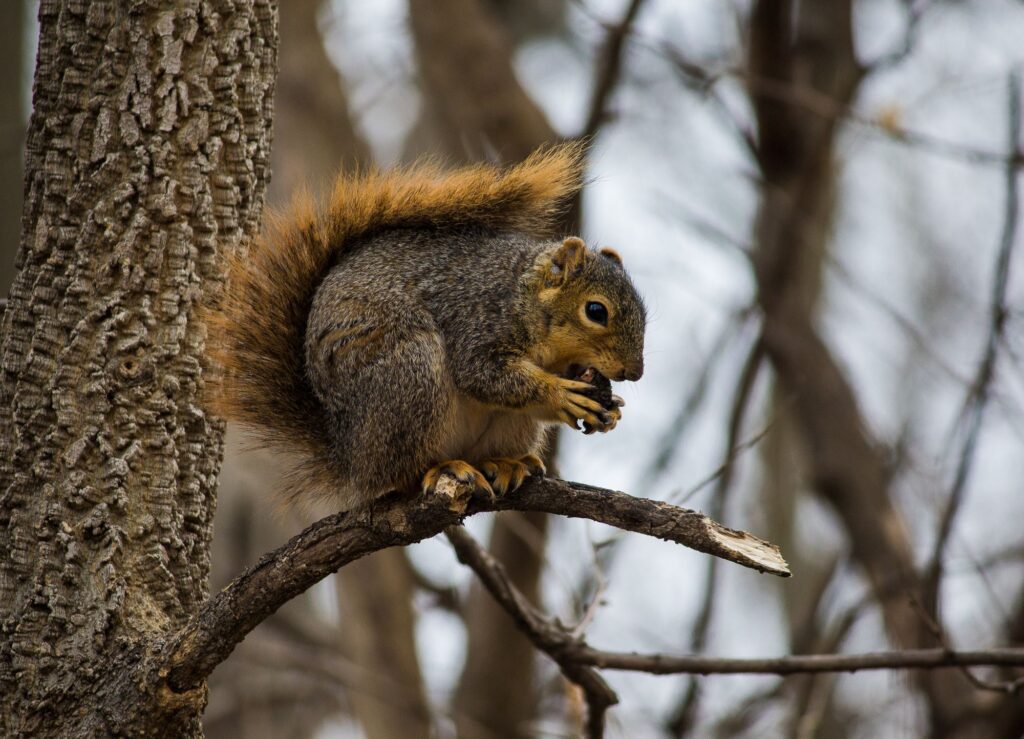When the days shorten, leaves drop, and frost covers our windshields in the morning, we know what to do. We pull out our favorite warm sweaters, cook a pot of chili, and wrap up in a fuzzy blanket on the couch.
When the days shorten, leaves drop, and frost covers our windshields in the morning, we know what to do. We pull out our favorite warm sweaters, cook up a pot of chili, and wrap up in a fuzzy blanket on the couch.
How do our local wildlife prepare for the coming frigid weather? It depends on two main factors: Can they find food in the winter? And do they have the ability to burn energy to heat their bodies?
Some wildlife lose their food source in the winter. Because most insects do not survive freezing weather, many songbirds end up traveling thousands of miles to their winter homes in Central and South America where insects are plentiful.
Cold-blooded wildlife, also called ectothermic animals, need the sun’s heat to regulate their body temperature. Even though the sun comes out in winter, the air is too cold. Snakes, frogs, salamanders, and turtles must travel in a different direction– underground. They burrow below the frost line and enter a dormant state called stupor to survive freezing weather.
But other wildlife stick around and tough it out. To adapt and stay active in the cold, they layer. But their warmth doesn’t come from a comfy sweater. Instead, they layer on thick fur and stored fat to trap their body heat. To maintain that internal heat during winter, they need to regularly find food and have a reliable warm place to survive.
Some wildlife store their food in advance. Squirrels frantically scurry about hoarding or caching nuts to eat later this winter. Are your bird feeders being emptied more rapidly than in summer? Many of the birds that stick around for winter like cardinals, blue jays, chickadees, and tufted titmice, will stash seeds away in bark and even wood siding. The behavior is just like squirrels hiding nuts.
You might crave a comforting dish of macaroni and cheese when the weather turns colder, many animals also change their diet. White tailed deer and turkeys eat grass and plants during spring and summer. During the fall and winter, they switch to foods that are richer in calories and nutrients like berries and nuts.
It’s not just food they need to prepare but shelter too. Animals can’t turn on the furnace in their homes. They build nests or huddle together. If you look high in the trees, you may see impressively large, leafy squirrel nests. Wildlife often line their winter home with grass, twigs, and wood shavings to fortify it against blustery winter winds. Hollow trees or snags provide homes for raccoons, opossums, and squirrels to gather together and share warmth.
Have you ever seen an animal disappear inside a tree? Woodpeckers are nature’s contractors. They are the first birds to carve out cavities in dead branches of trees looking for grubs and insects. Swallows, bluebirds, wrens, small owls, kestrels, and wood ducks move into these empty cavities when the woodpeckers move on.
Consider giving wildlife a helping hand in your backyard this fall. Make a brush pile of leaves and sticks for insects, snakes, frogs, and turtles to burrow under. Leave acorns and nuts on the ground around your oak, walnut, and hickory trees for animals to find this winter. Keep bird feeders full of dry sunflower seeds and add suet cakes for extra fuel. When ponds and streams freeze over water can be hard to find. Provide a pan of fresh water in a sunny area or add a heater to a birdbath.
While you cozy up with a mug of hot chocolate in your favorite comfy slippers this winter, you might be entertained by colorful and industrious wildlife outside your window.
Julie Borgmann is the Executive Director of Red-tail Land Conservancy. Her passion is preserving habitats where people and wildlife can thrive.




